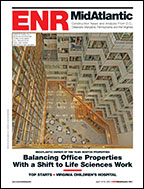In fact, he says, "tailings dams fail at a rate 10 times higher than water reservoirs. There is no reason for that."
The metals that get into waterways, such as arsenic, antimony, selenium and thallium, have a longer "life," are harder to remove and are "very toxic to aquatic life," he says. "A very low concentration can cause problems."
That's why transborder rivers, including the Stikine, Unuk and Taku, are crucial to Alaska's consumer, commercial and sport fishing industries, Chambers says. Salmon is the most valued species, culturally and commercially, but steelhead and rainbow trout are also important.
Fish is a part of life for native tribes, both for subsistence and as part of their culture, he says. "These people are part of the land. Their families have been on that land for a thousand years," he adds.
Chris Zimmer, with Rivers Without Borders in Juneau, says mines in the region put fisheries, jobs, culture, water quality and salmon habitat at risk. He says, "The two main threats for the mines are water pollution and contamination of salmon habitat" from chemical, gasoline and diesel fuel spills and tailings spills.
"Tailings from mines like KSM will be a toxic, acidic stew containing heavy metals, such as copper and arsenic, that are known to be very harmful to salmon. And then there is the long-term threat of acid mine drainage after mine closure," Zimmer says. "Tailings will have to be contained essentially forever."
And mines such as KSM, Red Chris and Tulsequah Chief already have completed the environmental assessment process, so the Mount Polley Review Panel recommendations won't apply to them.





Post a comment to this article
Report Abusive Comment